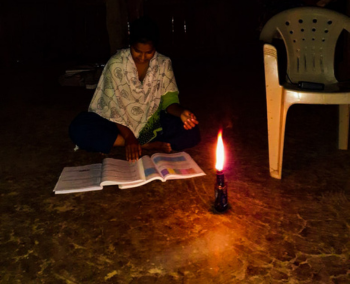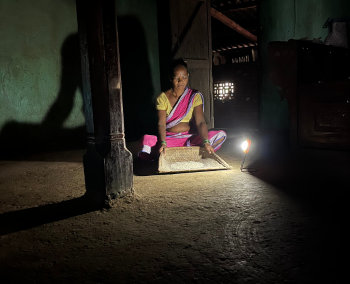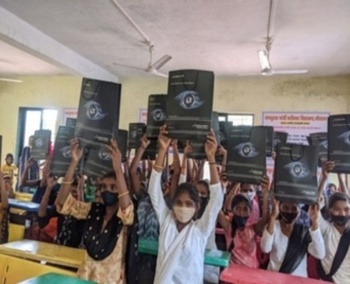The Social and Economic Benefits of Bringing Light to Rural Homes

City people might take electricity for granted, but in rural India, access to reliable electricity is more than just a modern convenience. In the villages of our country, electricity is a catalyst for social and economic transformation. As a matter of fact, there are communities, where there has been a struggle with limited infrastructure, unreliable electricity, and lack of a perennial water source. In all such situations, electrification not only illuminates homes but also brings an array of benefits that uplift lives and drive economic growth.
The many economic benefits of rural electrification
Electricity has a direct link with the economy – it’s actually really simple. When you have access to uninterrupted power, there is so much that you can do for income generation. With reliable power, small businesses can extend their hours of operation, and artisans can use modern tools to enhance production. Rural markets benefit from improved communication and the ability to connect with urban centers, increasing the flow of goods and services.
At Project Chirag, we have seen how electricity often translates into more money. Take the story of Parshuram Tabale, from Patilpada for instance.
A farmer, whose main crop was the fragrant mogra or Jasmine flower, Tabale struggled regularly, because he had no perennial source of water to irrigate his farmlands. To add to his troubles, his land sat on a slope, leading to a situation where they were completely dependent on the monsoons. He and his family often had to carry water from somewhere downhill and use that to irrigate their lands. Owing to all this, Tabale often had to migrate and look for work.
However, when we installed a solar-operated motor, he now had access to water, throughout the year; so much so, that Tabale has been able to cultivate these fragrant flowers all through the year.
He said, “With solar power and reliable water supply throughout the year, we are able to Mogra all year round, resulting in a fourfold increase in both crop yield and income. This positive change has put an end to the need for migration, and now, I, along with my fellow farmers, can earn more while staying in our village with our families.”
This also goes to show that electrified irrigation systems, powered by pumps and automated technologies, can reduce the dependency on manual labour and traditional water management techniques. Research indicates that modernizing agriculture with reliable power sources can improve productivity by as much as 20%, leading to increased incomes for rural farmers. Tabale is a shining example of the benefits of electrification in rural India!
The ripple effects of electrification extend beyond just agriculture and labor – the availability of electricity has led to the creation of new jobs in both traditional sectors and emerging industries. For example, in small villages of Maharashtra, you can now see women setting up agro-based industries and small manufacturing units, wherein they make jams, jellies, and pickles as well as handicrafts, which they sell to run their homes.



Moving onto the social benefits of rural electrification
One of the most profound impacts of bringing light to rural households is its effect on education. A study by the World Bank* suggests that improved electrification has led to an increase in school attendance by as much as 15% in some rural areas. This added study time and access to technology can result in better learning outcomes and higher literacy rates, preparing a skilled workforce for the future.
Allow us to give you some more real-life instances of the same:
In the Palghar district of Maharashtra, you could see the disparity in education; so, even though the overall literacy rates in the state are high, they were slightly disappointing when it came to the tribal population. Here, the primary education is handled by the Zilla Parishads, but owing to the lack of adequate infrastructure and reliable electricity, the situation in the schools was not optimum.
But things started to look up when Project Chirag stepped in – with support from Konica Minolta Business Solutions India Private Limited, we were able to identify 10 Zilla Parishad schools and transform them completely. We were able to truly comprehend the social benefits of rural electrification when we saw the changes electricity brought to these schools. By installing solar off-grid PV systems for reliable electricity, electrical fixtures as well as a 43-inch Smart TV, not only were there reduced electricity costs, but also improved student attendance, increased learning hours, and enhanced student and teacher performance.
Reliable electricity also improves overall health – health centers and rural clinics can offer better healthcare delivery, operate essential medical equipment, maintain proper vaccine storage with refrigeration, and offer emergency services, even during the night. Research* shows that rural areas with consistent electricity see reductions in infant mortality rates too.
Electricity plays a critical role in community safety because well-lit streets and public spaces reduce the risks of accidents and deter criminal activities. The simple act of turning on a light can empower residents, especially women, to feel safer and more confident when moving around in the evening.
Bringing light to rural homes in India transcends the simple act of flipping a switch—it ignites a cascade of social and economic benefits that reverberate across communities. So, if you are considering a solar energy project donation, make one today, because it could change more than just one life!





